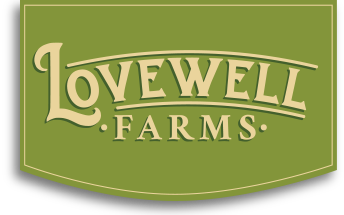THC vs Rhode Island’s Best Organic Hemp Flower
THC vs Rhode Island’s Best Organic Hemp Flower
A common question asked discussing CBD is, “What is the difference between hemp and marijuana?” Simply, they are two sides of the same coin. Both of these are different varieties of the cannabis plant. The common species of cannabis are Sativa, Indica, and Ruderalis, which have all become widely hybridized to create the many strains known to the industry. In the way a tomato comes in many sizes and colors, cannabis comes with different cannabinoid profiles and fragrances.
The current legal definition of hemp by the USDA is “cannabis flower tested within the top 3 inches of the plant and at 30 days before harvest, must have below .3% total THC.” It’s important to understand that hemp and CBD have been federally legalized, allowing Lovewell Farms to sell products like raw CBD Pre Rolls and some of the best CBD balm in Rhode Island. Marijuana currently remains a schedule one drug. Over the next ten years, these legal definitions will change along with the policy. Regarding hemp, there are several varieties designed for different agricultural purposes.
The first and most commonly known type of hemp is fiber hemp. Fiber hemp is planted at 6”-1’ spacing and grows as a straight, single-stemmed whip, which grows to be 10-15ft tall. The fibers extracted from the pulverized stalk create a wide array of materials such as cloth, rope, paper, cement, and even biodegradable plastic. There are specific varieties within fiber hemp that have different qualities of fiber that make them suitable for different applications. The production of hemp fiber is significantly more sustainable than the process of logging trees to create paper pulp. One acre of hemp create as much paper as 4-10 acres of trees. It takes four months to grow an acre of hemp, as opposed to the 20-80 years it takes to grow trees. The primary component paper is made of is cellulose, but it must be extracted from the base material, of which most wood contains about 30%. Hemp fiber contains about 85% cellulose. This means it not only takes less material to create paper, but it also requires much fewer chemicals used in the process.
CBD vs Hemp Seed Oil
The variety most commonly associated with CBD is Organic Hemp Flower. These are usually grown at 6’x6’ spacing or greater and develop into plants between 6-12 feet that have significant horizontal branching that causes plants to be half to fully as wide as tall. Often these plants are topped to increase horizontal branch growth. Most CBD flower is processed into CBD concentrate, which usually comes in the form, Isolate, and Distillate. These concentrates are used to create various CBD products like 500mg CBD Salve and some of the Best CBD Topicals. CBD flowers can also be dried, trimmed, and cured for the purpose of smoking, vaping, or cooking.
The final version of hemp is seed hemp. Seed hemp is planted at 2-4 foot spacing and forms into a shorter, wider plant. Hemp seeds are used for a number of applications. They are commonly used in animal feed, cereal, granola, or pressed for oil. The oil has become popular in skincare products such as lotions and soaps. Unfortunately, companies sometimes add hemp seed oil to their products and attempt to imply that it means it contains CBD. Consumers must understand that hemp seed oil does not contain any CBD. Additionally, it does not make a good carrier oil for creating CBD tincture. This is because it does not have a high lipid concentration like coconut oil. Beware of any company that claims that hemp seed oil is best for this purpose simply because they come from the same plant.
Through breeding, it is possible to create varieties that serve multiple functions that usually cover two of the three hemp varieties. However, this will create limitations for the end material. Flower hemp for the production of seeds or fiber is generally this too low quality to be sold as a smokable flower. However, this still makes suitable concentrate. It is perhaps most common to see fiber growers getting seeds as a byproduct. A reason you won’t usually see all 3 taking place in the same field is that when growing flower, it is important to have as close to 100% female plants. This is because the female cannabis plant, unlike the male, produces the flower structure we associate with cannabis. This is achieved through a process known as feminization which eliminates the possibility of creating a male plant. Feminized seeds are considerably more expensive than non-feminized seeds, which would make it cost-prohibitive to plant at the density most fiber crops are grown. The close spacing creates a perfect environment for pests and diseases to set into your field.
We hope this analysis of cannabis and its many varieties has been helpful. We at Lovewell Farms look forward to the day when we can grow all types of cannabis outdoors, we can offer our customers an array of products and treatments. As we draw closer to federally legalized marijuana, we hope to see regulations no longer focus on limiting cannabinoid contents and instead focus on the cleanliness and quality of the product. That day may still be far away, but the first step toward its understanding the difference between hemp and marijuana.

